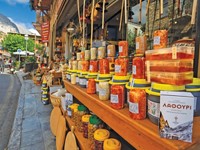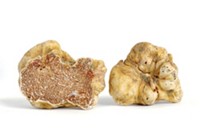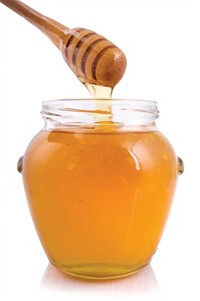Advertisement
Grab your lab coat. Let's get started
Welcome!
Welcome!
Create an account below to get 6 C&EN articles per month, receive newsletters and more - all free.
It seems this is your first time logging in online. Please enter the following information to continue.
As an ACS member you automatically get access to this site. All we need is few more details to create your reading experience.
Not you? Sign in with a different account.
Not you? Sign in with a different account.
ERROR 1
ERROR 1
ERROR 2
ERROR 2
ERROR 2
ERROR 2
ERROR 2
Password and Confirm password must match.
If you have an ACS member number, please enter it here so we can link this account to your membership. (optional)
ERROR 2
ACS values your privacy. By submitting your information, you are gaining access to C&EN and subscribing to our weekly newsletter. We use the information you provide to make your reading experience better, and we will never sell your data to third party members.
Analytical Chemistry
Food Detectives
ACS Meeting News: Analytical chemists devise methods to confirm foods are what they claim to be
by Sophie L. Rovner
April 5, 2010
| A version of this story appeared in
Volume 88, Issue 14

When you uncork a bottle of wine, do you ever wonder whether it contains what the label claims? And when you stir a spice into your cooking, does it occur to you that it might include adulterants?
These are far from esoteric questions. In late February, the world’s second largest winery, E. & J. Gallo, in Modesto, Calif., and its suppliers were sued for selling 18 million bottles of wine labeled as Pinot Noir that actually contained wine made from cheaper Merlot and Syrah grapes. Gallo blamed its suppliers, who have already been convicted for the fraud in France.
As a result of economic and safety concerns, “there is a lot of interest right now in trying to develop analytical methods to authenticate food and wine,” said Susan E. Ebeler, a chemist in the viticulture and enology department at the University of California, Davis. She cochaired an extensive symposium on the topic presented before the Division of Agricultural & Food Chemistry at last month’s American Chemical Society national meeting.
Researchers are looking for chemical markers that can answer questions about the purity and source of foods and beverages. “For example,” Ebeler said, if a fish fillet is labeled “ ‘salmon,’ is it really salmon or some other fish species?”
Even if a food is identified correctly from a macro perspective, the details might be off. So it would be useful to be able to tell whether a wine labeled as coming from California’s Napa Valley was really produced there, or whether it was younger than the vintage indicated on the label, Ebeler noted.

One potential sticking point involves the establishment of valid standards that can be used to judge the authenticity of a given food sample. It wouldn’t make sense to use the chemical profile of a single tomato as a representative sample against which to compare all tomato products, Ebeler explained. Databases need to be compiled that include profiles from a range of varieties, geographical origins, and production processes. “A Cabernet grown in Europe might have a slightly different chemical profile from a Cabernet grown in Australia or the U.S.” as a result of different growing conditions such as sun and soil, Ebeler said.
European regulators have used profiles that characterize the quantity and type of phenolic compounds in wines to determine varietal authenticity, noted James A. Kennedy, research manager for chemistry at the Australian Wine Research Institute (AWRI), in Adelaide. This has caused some problems for overseas producers who wanted to export their wines to the European Union but whose wine profiles differed from the database profiles.
Kennedy has some serious misgivings about using phenolics such as anthocyanins and flavonoids to determine authenticity—at least for red wines. He described a study he performed with Cabernet Sauvignon, Merlot, Syrah, and Zinfandel red wines. He assessed them using high-performance liquid chromatography (HPLC) and statistical analyses to see whether their phenolic profiles, on the basis of variation in hydroxylation and esterification, were distinctive enough that they could be used as enological fingerprints to identify an unknown wine sample.
Kennedy found that the profiles vary depending on growing and production conditions and wine age. They also overlap to such an extent that the phenolic profiles are only useful in distinguishing Cabernet from the other three red wines. “Cabernet Sauvignon has an acylation pattern on the anthocyanins that is somewhat unique,” he explained. “Cabernet Sauvignon has a higher proportion of acetate esters relative to coumarate esters in the wines that we studied.” But he warned that this pattern becomes less distinctive as the wine ages.
Another problem with this approach is that reference standards for many phenolic compounds aren’t yet available, Ebeler said, so it’s difficult to confirm the identity of some compounds and to accurately determine their concentrations.
Meanwhile, research into other techniques for authenticating wine is progressing. For example, AWRI is looking at protein detection using mass spectrometry, Kennedy told C&EN. “Grapes, whenever they are hit with a fungal pathogen, start producing inhibitory proteins” that are varietally distinctive, he said. “So if you get a fingerprint of the proteins in the wine, you can tie that back to the grape variety the wine was made from.”
Isotopic signatures characterized via accelerator mass spectrometry (AMS) can be used to confirm the vintage of a wine, according to Bruce A. Buchholz, a chemist at Lawrence Livermore National Laboratory’s AMS center.
Plants take up carbon from the atmosphere in the form of CO2. Although the level of 12C and 13C in the atmosphere is essentially constant, the amount of radiocarbon (14C) doubled between 1950 and 1963 as a result of nuclear weapons testing. It has since fallen back nearly to normal, Buchholz told C&EN. The variation in 14C content from one year to the next is great enough that a wine produced from grapes grown in, say, 1971 can be distinguished from wine made from grapes grown in 1972, he said.
Beyond wine, the AMS radiocarbon method can also be used to evaluate food claims regarding natural versus synthetic content, Buchholz said. Ingredients derived from petroleum sources are devoid of 14C because the source material is so old that all the 14C has decayed. That means that a product such as vanilla flavoring has a natural, contemporary 14C:12C ratio if it’s extracted from vanilla beans but is nearly 14C-free if it’s synthesized from toluene, a petrochemical raw material.
As analyses grow more sophisticated, the results sometimes surprise the producers themselves. Identification of grape varieties has traditionally relied on visual observation of leaf shape, grape cluster characteristics, and how the vine grows, Ebeler told C&EN. “But now we have DNA genetic tools where we can say, ‘This is what the genetic fingerprint of a Syrah looks like.’ ” And these tests have shown that in some cases, vines that looked like Merlot were actually Carmenère, she said.
Additional genetic tools include peptide nucleic acids, which are being tested as a way to authenticate varieties and to detect genetically modified organisms (C&EN, Feb. 2, 2009, page 30).
Analytical techniques are also being developed to detect adulterants and contaminants such as colorants in fruit juices, melamine in milk products, bulking agents in botanical products, and pesticide residues, Ebeler told C&EN.
Some adulterants are harmless, such as the cheaper rice varieties sometimes mixed in with basmati rice. These grains can’t be distinguished visually, so researchers in India have developed a capillary electrophoresis DNA-profiling technique to detect the adulteration, noted Gary R. Takeoka, a research chemist at the U.S. Department of Agriculture’s Western Regional Research Center, in Albany, Calif., and coorganizer of the food authentication symposium.
In the case of coffee, less expensive robusta coffee might be added to arabica coffee, said Ulrich H. Engelhardt, a food chemist at Braunschweig University of Technology, in Germany. This particular fraud can be detected with HPLC because only robusta contains 16-O-methylcafestol.
Soluble instant coffee can be assessed for adulterants such as coffee husks or cereal by checking for excess glucose and xylose content by HPLC, Engelhardt said. Chicory adulteration can also be detected by HPLC because it boosts fructose levels.
Geographic origin of green coffee beans can be assessed with elemental analysis-isotope ratio mass spectrometry based on carbon, nitrogen, oxygen, and strontium isotope ratios, according to Engelhardt. Chlorogenic acid profiles could also be used. The origin of roasted coffee is analyzed by checking metal content via atomic absorption or inductively coupled plasma techniques. More recently, carbon isotope ratios have been used.
Like coffee, tea can also be mixed with a cheaper grade to stretch a more expensive variety. Some varieties, including black and green teas, can be distinguished by their catechin profiles by HPLC, Engelhardt said.
Adulterants also show up in spices such as saffron, the most expensive spice in the world, according to Ana María Sánchez, an agronomist and agricultural engineer at the University of Castilla-La Mancha, in Albacete, Spain. The spice consists of the dried stigmas of Crocus sativus blossoms.
Saffron’s aroma derives primarily from safranal, whereas picrocrocin is responsible for its pleasantly bitter flavor. Its red-gold color has been traced to water-soluble carotenoids identified as glycosyl esters of crocetin that are known as crocins, Sánchez said.

As with other foods, saffron’s characteristics vary by region, in part because production processes differ. In Spain, which Sánchez said produces the most prized saffron, flowers are handled with extreme care and stigmas are separated from the blossoms immediately after the flowers are picked. They’re then dehydrated by “toasting” above oak embers or another heat source for about 20 minutes, she told C&EN. Elsewhere, producers leave the stigmas attached to the picked blossoms for a while or dry the stigmas in sunlight or at room temperature.
Potential adulterants include other parts of the saffron blossom, such as stamens or styles; stigmas from other Crocus species; and other flowers such as marigolds or safflowers. Artificial colorants are used to dye these adulterants so they resemble saffron stigmas or to increase the apparent value of old saffron.
Ultraviolet-visible spectrophotometry is often used for quality control and can detect some adulterants, she noted. Authenticity can also be assessed by gas chromatography, HPLC, thin-layer chromatography, or chemometrics combined with near-infrared or Fourier transform IR spectroscopy.
Several research groups are developing new techniques for assessing saffron. Sánchez’ group, for instance, is working on a solid-phase extraction method that can determine picrocrocin content and whether the colored crocetin esters are really from saffron or are instead from other sources, such as gardenia fruit.
“We probably will never be able to use just one method” to authenticate a food, Ebeler said. In order to characterize a sample with assurance, she said, analysts will likely combine multiple methods, such as a chemical profile, an isotope ratio profile, and genetic information, along with statistical tools to “tease out various relationships between all these parameters.” In the end, Ebeler said, these analyses will mean that “consumers can be much more sure that they’re actually getting what they’re paying for.”







Join the conversation
Contact the reporter
Submit a Letter to the Editor for publication
Engage with us on Twitter